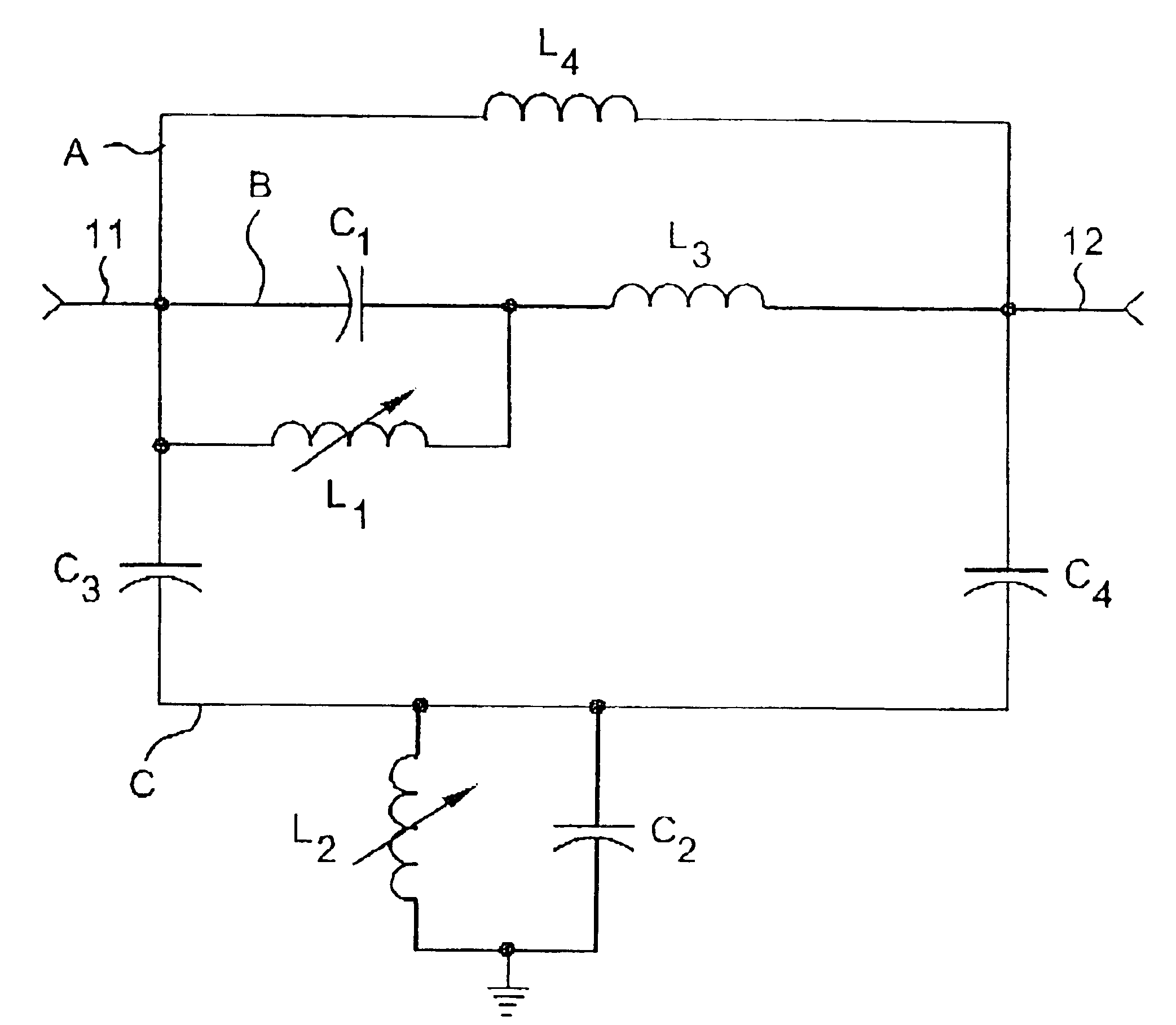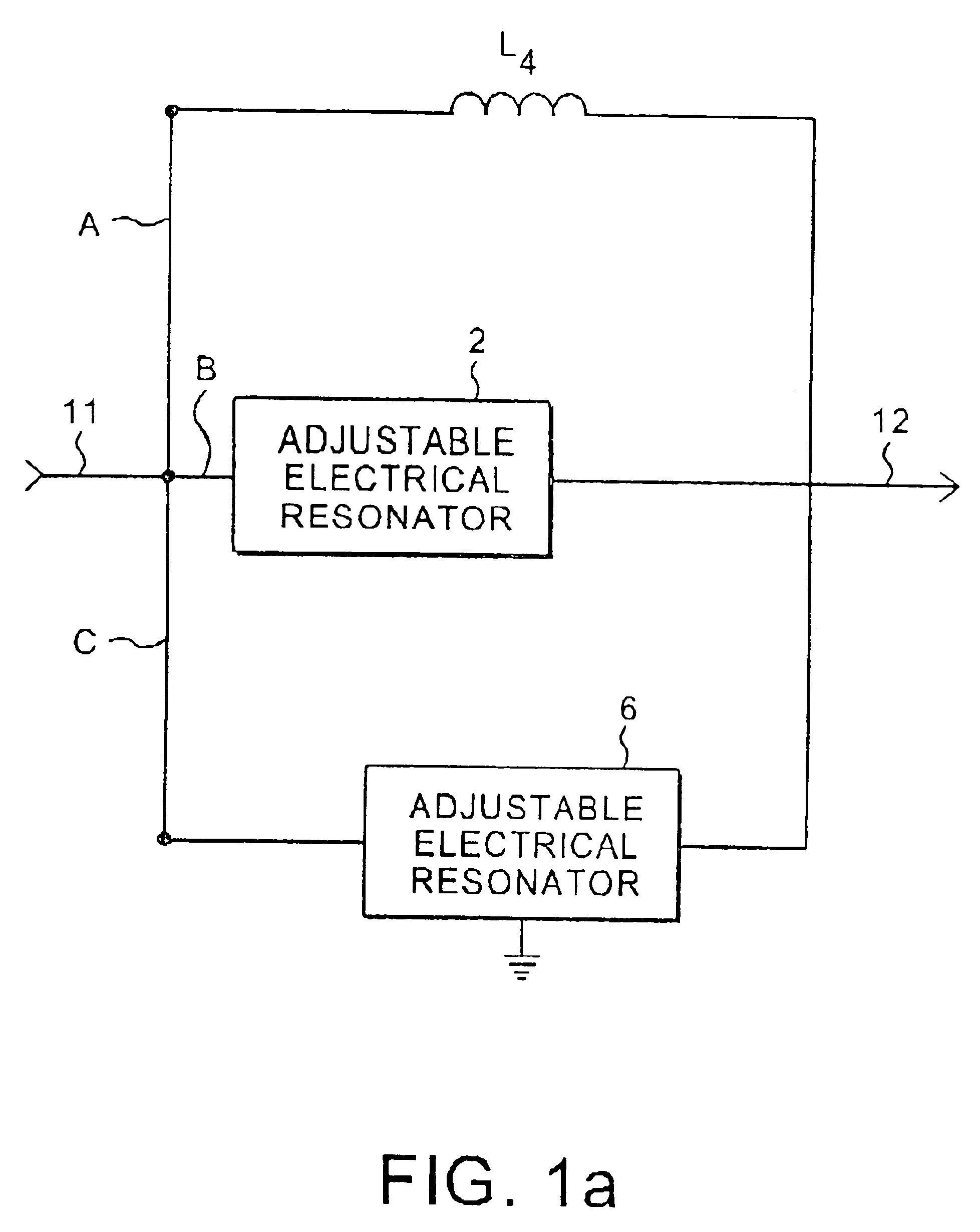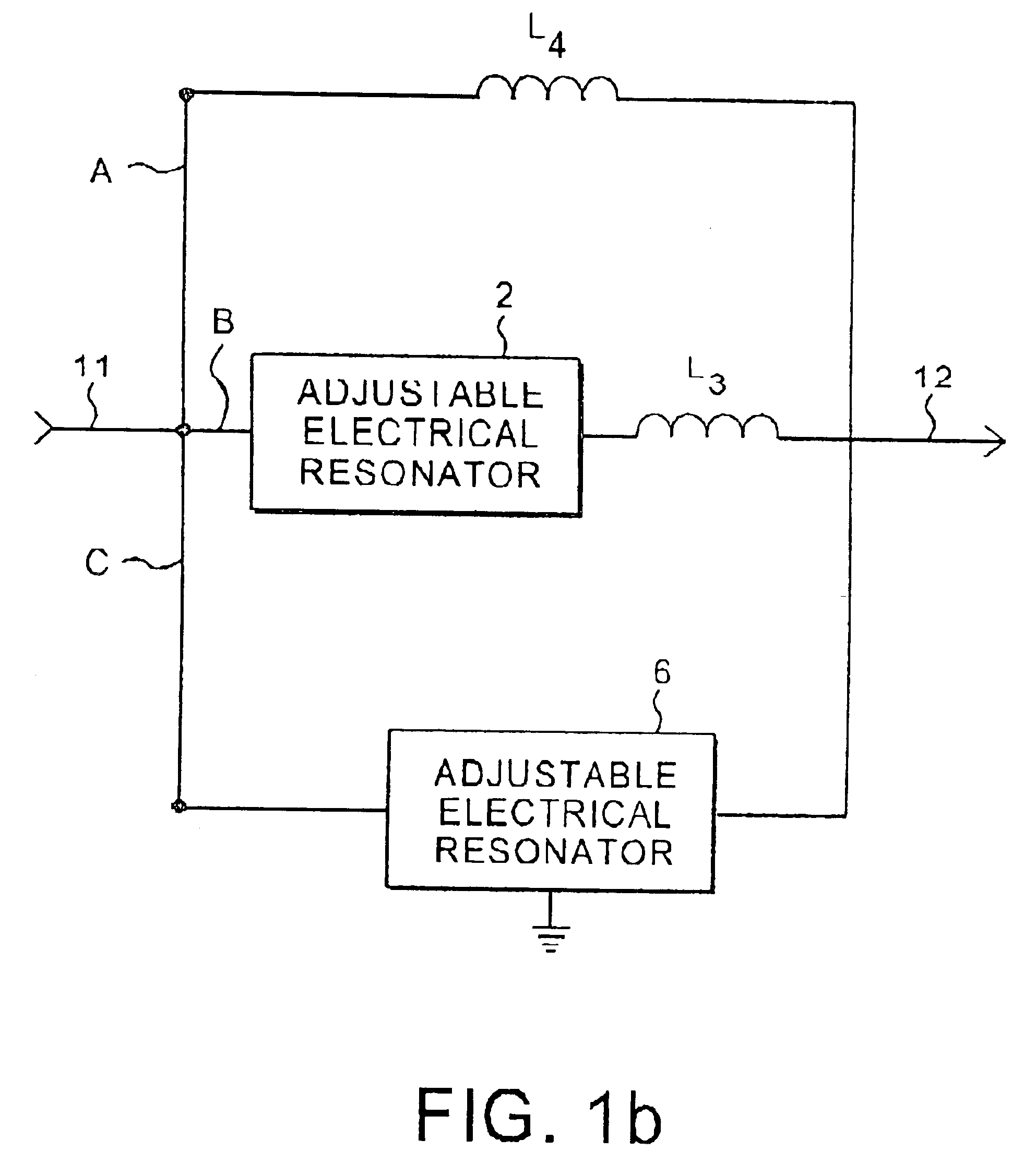Two-pole notch filter
a notch filter and two-pole technology, applied in filters, multiple-port networks, electrical devices, etc., can solve the problems of preventing the reception of desired frequencies, affecting the stability of filter devices, and requiring a large number of components, so as to improve the stability of terns, reduce sensitivity, and widen the characteristic of inband bandwidth
- Summary
- Abstract
- Description
- Claims
- Application Information
AI Technical Summary
Benefits of technology
Problems solved by technology
Method used
Image
Examples
example 1
Frequency Response of a Prior Art Two-pole Filter v. Two-pole Filter of the Present Invention
FIG. 5b shows a comparison in frequency responses between the two-pole prior art filter circuit illustrated in FIG. 2 and the notch filter of the present invention as shown in FIG. 1h, with each filter tuned to a center frequency of 169.250 MHZ. The component values used in constructing the prior art two-pole device are provided in Table 2 below.
TABLE 2InductorTurnsDiameter (inches)L14.50.180L22.50.180L32.50.068Temperature CompensationCapacitorCapacitance (pF)RatingC110N80C220N8OC31.5NPOC40.5NPO
As illustrated in FIG. 5b, the relatively wide notch provided by the two-pole notch filter of the present invention is significantly different from the narrow notch provided by the prior art two-pole notch filter. The two-pole notch filter of the present invention exhibits a significantly wider notch shape than the extremely narrow notch characteristic associated with the prior art two-pole notch filt...
example 2
Frequency Response of a Prior Art Three-pole Notch Filter v. Two-pole Notch Filter of the Present Invention
FIG. 5c shows a comparison in frequency responses between the three-pole prior art filter circuit illustrated in FIG. 3 and the notch filter of the present invention as shown in FIG. 1h, with each filter tuned to a center frequency of 169.250 MHZ. The component value used in constructing the prior art three-pole device are summarized in Table 3 below.
TABLE 3InductorTurnsDiameter (inches)L1, L2, L33.50.210L41.50.125L51.50.150Temperature CompensationCapacitorCapacitance (pF)RatingC1, C310N80 C210N150C4, C51.8NPO
FIG. 5c shows that the frequency response of the two-pole filter of the present invention is somewhat more narrow or sharp than the frequency response notch provided by an exemplary prior art three pole notch filter. Nevertheless, the two-pole notch filter still provides adequate attenuation in a sufficient bandwidth surrounding the center frequency to ensure stability. Mo...
example 3
Frequency Response of a Prior Art Four-pole Filter v. Two-pole Filter of the Present Invention
FIG. 5d shows a comparison in frequency responses between the four-pole prior art filter circuit illustrated in FIG. 4 the notch filter of the present invention as shown in FIG. 1h, with each filter tuned to a center frequency of 169.250 MHZ. The component values used in constructing the two prior art two-pole devices are summarized in Table 4 below.
TABLE 4InductorTurnsDiameter (inches)L1, L44.50.180L2, L32.50.180L5, L62.50.068Temperature CompensationCapacitorCapacitance (pF)RatingC1, C410N80C2, C320N8OC5, C81.5NPOC6, C70.5NPO
FIG. 5d illustrates that the two-pole notch filter of the present invention offers performance that is virtually identical to that of the known four pole devices, but utilizes only eight passive components. The two-pole notch filter of the present invention provides comparable attenuation, bandwidth and stability in comparison to the four-pole filter, which requires fo...
PUM
 Login to View More
Login to View More Abstract
Description
Claims
Application Information
 Login to View More
Login to View More - R&D
- Intellectual Property
- Life Sciences
- Materials
- Tech Scout
- Unparalleled Data Quality
- Higher Quality Content
- 60% Fewer Hallucinations
Browse by: Latest US Patents, China's latest patents, Technical Efficacy Thesaurus, Application Domain, Technology Topic, Popular Technical Reports.
© 2025 PatSnap. All rights reserved.Legal|Privacy policy|Modern Slavery Act Transparency Statement|Sitemap|About US| Contact US: help@patsnap.com



